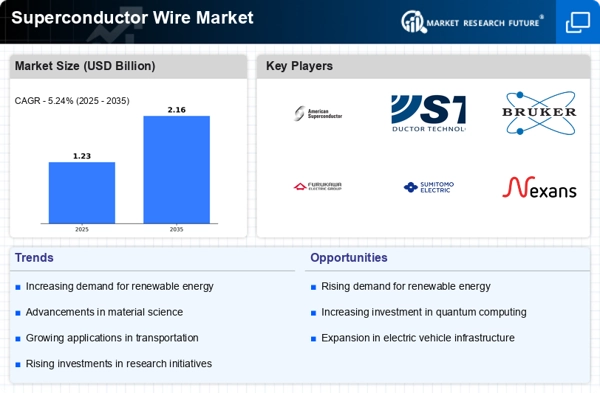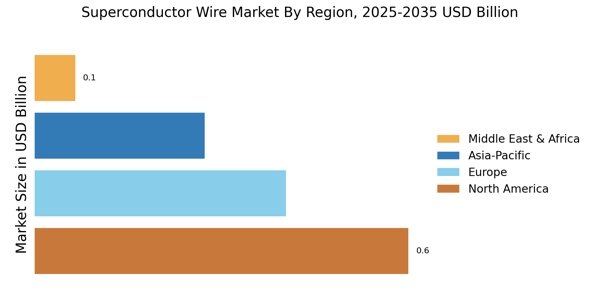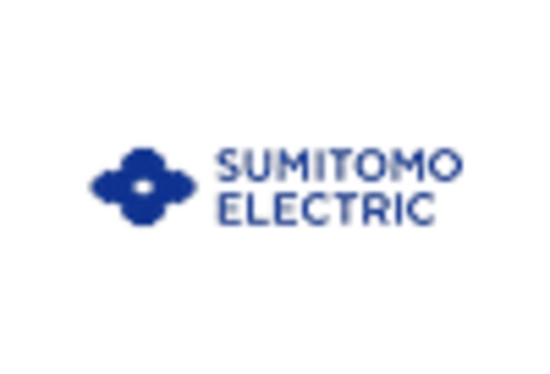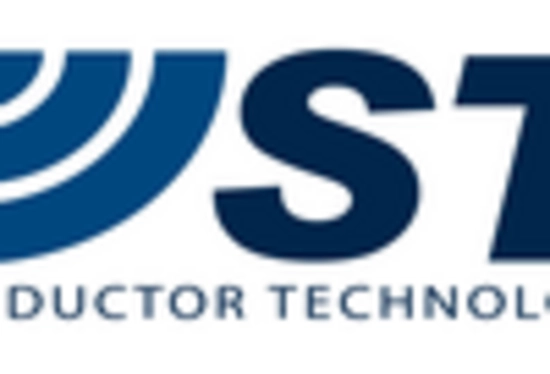Technological Innovations in Superconductor Wire Market
The Superconductor Wire Market is currently experiencing a surge in technological innovations that enhance the performance and efficiency of superconducting materials. Recent advancements in high-temperature superconductors (HTS) have led to improved wire production techniques, which significantly reduce costs and increase the applicability of these materials in various sectors. For instance, the introduction of coated conductors has enabled the development of wires that can operate at higher temperatures, thus expanding their usability in power generation and transmission. The market is projected to grow at a compound annual growth rate (CAGR) of approximately 10% over the next five years, driven by these innovations. As industries seek to leverage superconducting technology for enhanced energy efficiency, the Superconductor Wire Market is poised for substantial growth.
Government Support and Funding in Superconductor Wire Market
Government support plays a crucial role in the development of the Superconductor Wire Market. Various governments are recognizing the potential of superconducting technologies in addressing energy challenges and are providing funding for research and development initiatives. This support is evident in the establishment of public-private partnerships aimed at advancing superconductor applications in energy, transportation, and healthcare. For instance, funding programs have been initiated to explore the use of superconductors in power grids and electric vehicles, which could lead to more efficient energy systems. Such initiatives are likely to stimulate innovation and accelerate the commercialization of superconducting technologies, thereby bolstering the Superconductor Wire Market.
Rising Demand for Energy Efficiency in Superconductor Wire Market
In the context of the Superconductor Wire Market, the increasing emphasis on energy efficiency is a pivotal driver. Industries are under pressure to reduce energy consumption and carbon footprints, leading to a heightened interest in superconducting materials that offer minimal resistance and energy loss. The integration of superconductor wires in power grids and renewable energy systems can lead to significant improvements in energy transmission efficiency, potentially reducing losses by up to 50%. This demand is further fueled by government initiatives aimed at promoting sustainable energy solutions. As a result, the Superconductor Wire Market is likely to witness a robust expansion, with investments in research and development aimed at optimizing superconducting technologies.
Expanding Applications in Medical Imaging within Superconductor Wire Market
The Superconductor Wire Market is witnessing a notable expansion in applications within the medical imaging sector, particularly in Magnetic Resonance Imaging (MRI) systems. Superconducting wires are essential for creating the strong magnetic fields required in MRI machines, which are critical for accurate diagnostics. The increasing prevalence of chronic diseases and the growing demand for advanced medical imaging technologies are propelling the market forward. It is estimated that the medical imaging segment will account for a significant share of the overall market, with a projected growth rate of around 8% annually. This trend underscores the importance of superconducting materials in enhancing healthcare outcomes, thereby driving the Superconductor Wire Market.
Increased Investment in Renewable Energy Infrastructure within Superconductor Wire Market
The Superconductor Wire Market is benefiting from increased investments in renewable energy infrastructure. As countries strive to transition to sustainable energy sources, the demand for efficient energy transmission solutions is rising. Superconducting wires, with their ability to transmit electricity with minimal losses, are becoming increasingly attractive for integration into renewable energy systems, such as wind and solar power. The market is expected to see a surge in projects aimed at incorporating superconducting technology into energy grids, driven by the need for reliable and efficient energy distribution. This trend is likely to result in a compound annual growth rate of around 12% in the coming years, highlighting the pivotal role of superconductors in the future of energy infrastructure.


















Leave a Comment